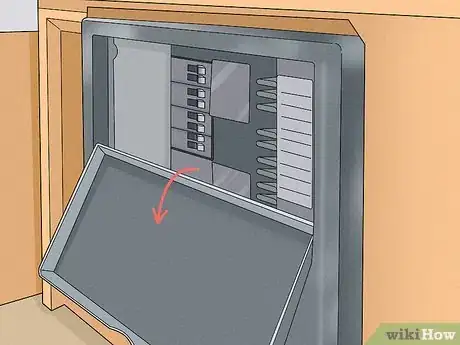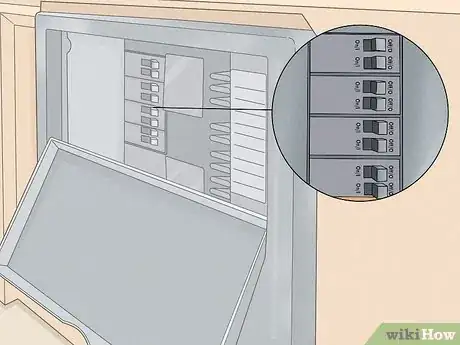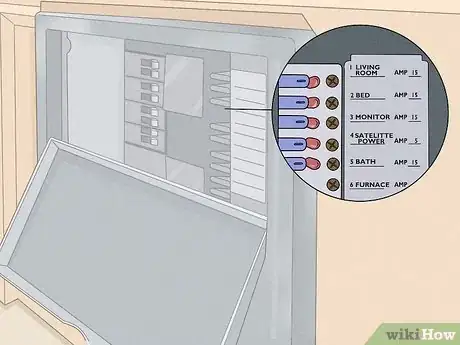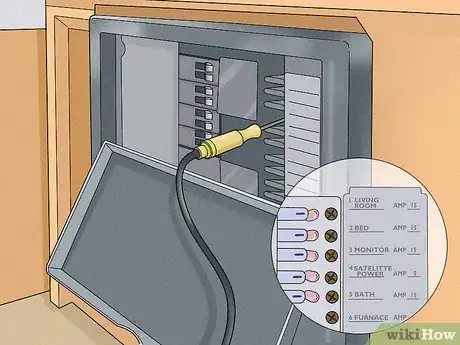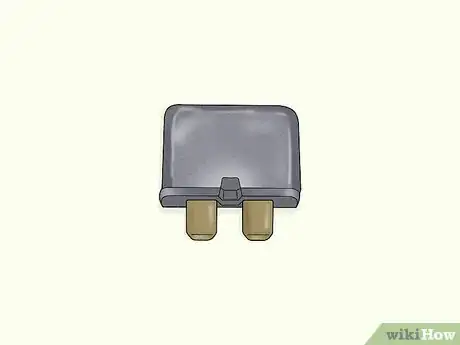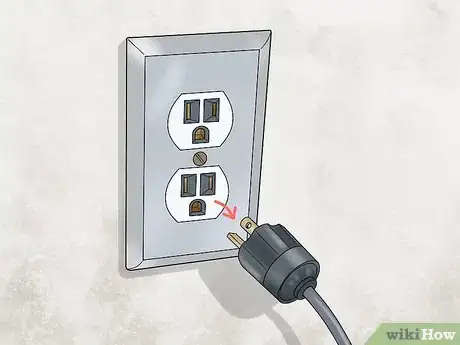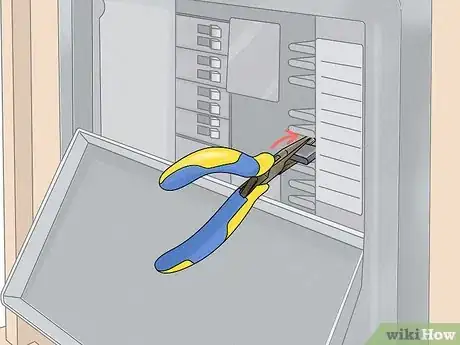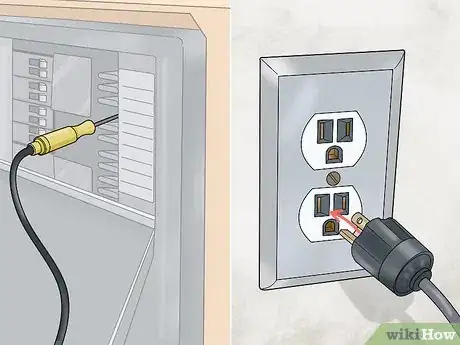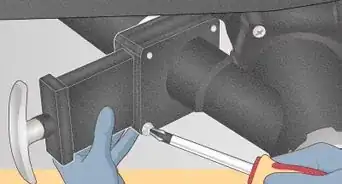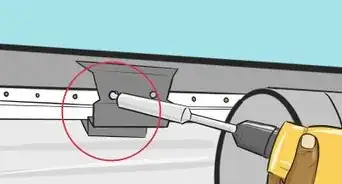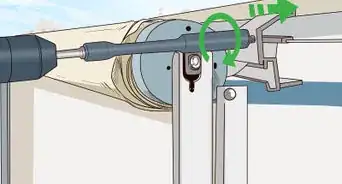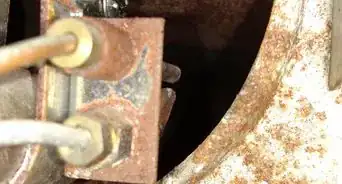This article was co-authored by wikiHow Staff. Our trained team of editors and researchers validate articles for accuracy and comprehensiveness. wikiHow's Content Management Team carefully monitors the work from our editorial staff to ensure that each article is backed by trusted research and meets our high quality standards.
There are 7 references cited in this article, which can be found at the bottom of the page.
This article has been viewed 36,351 times.
Learn more...
If you’re hanging out in your RV and all of a sudden the lights go out, the TV turns off, or another electrical appliance stops working, the culprit might be a pesky blown fuse! Fortunately, it’s really easy to replace an RV fuse and get back to relaxing. It’s really just a matter of locating your fuse box panel, identifying and testing the fuse to make sure it’s not working, then pulling it out and sticking a new one in. It’s a good idea to carry spare fuses, a test light, and a pair of needle-nose pliers or fuse pullers in your RV whenever you hit the road, so you can quickly troubleshoot and solve any fuse-related issues.
Steps
Locating and Checking the Fuses
-
1Find the 12-volt fuse box in your RV’s electrical compartment and open it up. The electrical compartment could be in a closet, a cabinet, or behind a panel on a wall or underneath a seat. Refer to your RV’s owner’s manual if you aren’t sure where the fuse box is located. Remove the panel that covers the fuses when you find it.[1]
- Changing an RV fuse is something you would do if a certain electrical appliance in your RV stops working, such as your TV or refrigerator. This normally happens when you’re using too much power at once.
- RVs typically have both a fuse box and a circuit breaker panel located next to each other under the same panel or in the same compartment.
-
2Look for any tripped breakers and flip them back on first. Inspect the circuit breaker panel before you examine the fuses, in case you just have a tripped breaker. Flip any breakers that are in the OFF position back to the ON position.[2]
- If the electrical appliance in question starts working again at this point, you don’t have to continue. You can close up the circuit breaker and fuse box and get back to whatever you were doing.
Advertisement -
3Read the fuse labels to find the fuse for the appliance that isn’t working. Locate a labelled diagram next to the fuses or on the inside of the fuse box panel. Read the labels to determine which fuse corresponds to the appliance in your RV that stopped working.
- For example, if there is a label that says “SATELLITE POWER 5 AMP” in the top right corner of the label diagram, the fuse you’re looking for is a 5 amp fuse in the upper right corner of the fuse box.
- You might be able to tell which fuse is out just by looking at them as well. Blown fuses often have a dark, burnt-looking smear or a visible break in the metal wire that you can see through the glass or plastic.
-
4Test the fuse with a test light. Clamp the test light’s alligator clip onto any screw on the fuse box to ground the test light. Touch the test light probe to the left and right sides of the fuse, without removing the fuse, and watch for the light to go on in the handle.[3]
- If the light doesn’t turn on for one or both sides of the fuse, it is bad and you must replace it.
- If the light turns on for both sides of the fuse, it is fine and the problem is elsewhere. For example, you might have a bigger electrical problem or there could be a problem with your appliance.
- You can buy an LED test light online or at an auto supply shop for as little as $10 USD.
Removing and Replacing a Fuse
-
1Purchase a replacement fuse with the same voltage and amperage rating. The ratings are written right on the fuse. Buy a replacement fuse with the same voltage and amperage rating written on it to replace the bad fuse.[4]
- Generic fuses are pretty cheap. You can buy them online or at an auto parts shop.
- It’s a good idea to carry a box of spare fuses of different amperages with you in your RV. That way, if a fuse blows on the road, you can quickly replace it with no hassles.
-
2Turn off and unplug the electrical appliance for the fuse you’re replacing. Flip the power switch for the electrical appliance to the OFF position. Unplug the appliance as well, if possible, to ensure it has no access to electricity when you put a new fuse in.
- For example, if the lights in the living area of your RV went out, make sure all the light switches in that area are flipped off to avoid them all coming on at once when you put a working fuse in.
-
3Pull out the bad fuse using fuse pullers or needle-nose pliers. Grab the fuse between the jaws of the fuse pullers or needle-nose pliers and squeeze gently to get a grip on it. Pull it straight out of the fuse block to remove it.[5]
- Fuse pullers are a plastic pincer-type tool that is specially designed to fit around the fuses and pull them out. Your RV may have a pair hanging somewhere inside the electrical compartment.
-
4Plug the new fuse into the empty fuse block space. Position the new fuse so that the amperage number is right-side-up and facing you. Push it into the spot you just pulled the fuse out of until it is in all the way.[6]
- You don’t need any special tools to do this. The fuse should just pop right into place nice and easy.
-
5Test the new fuse and the corresponding electrical appliance. Check both the left and right sides of the new fuse with your test light probe and watch for the light in the handle to come on. Plug in and try turning on the electrical appliance that wasn’t working to ensure that the new fuse fixed the problem.[7]
- If something like a light bulb still isn’t working after you replace a blown fuse, check to make sure that the light bulb itself didn’t blow as well.
Warnings
- Always turn off and unplug the electrical appliance that corresponds to the fuse you’re replacing before you remove the old fuse and put a new one in.⧼thumbs_response⧽
Things You’ll Need
- Test light
- Fuse pullers or needle-nose pliers
- Replacement fuse
References
- ↑ https://www.youtube.com/watch?v=gGSrs1dcyZc&feature=youtu.be&t=9
- ↑ https://www.youtube.com/watch?v=gGSrs1dcyZc&feature=youtu.be&t=30
- ↑ https://blog.emanualonline.com/how-to-use-an-automotive-test-light/
- ↑ https://mobilerving.com/blog/changing-a-simple-fuse-in-your-rv
- ↑ https://www.youtube.com/watch?v=7b2Fy-8EiVA&feature=youtu.be&t=149
- ↑ https://www.youtube.com/watch?v=7b2Fy-8EiVA&feature=youtu.be&t=159
- ↑ https://www.youtube.com/watch?v=7b2Fy-8EiVA&feature=youtu.be&t=169
